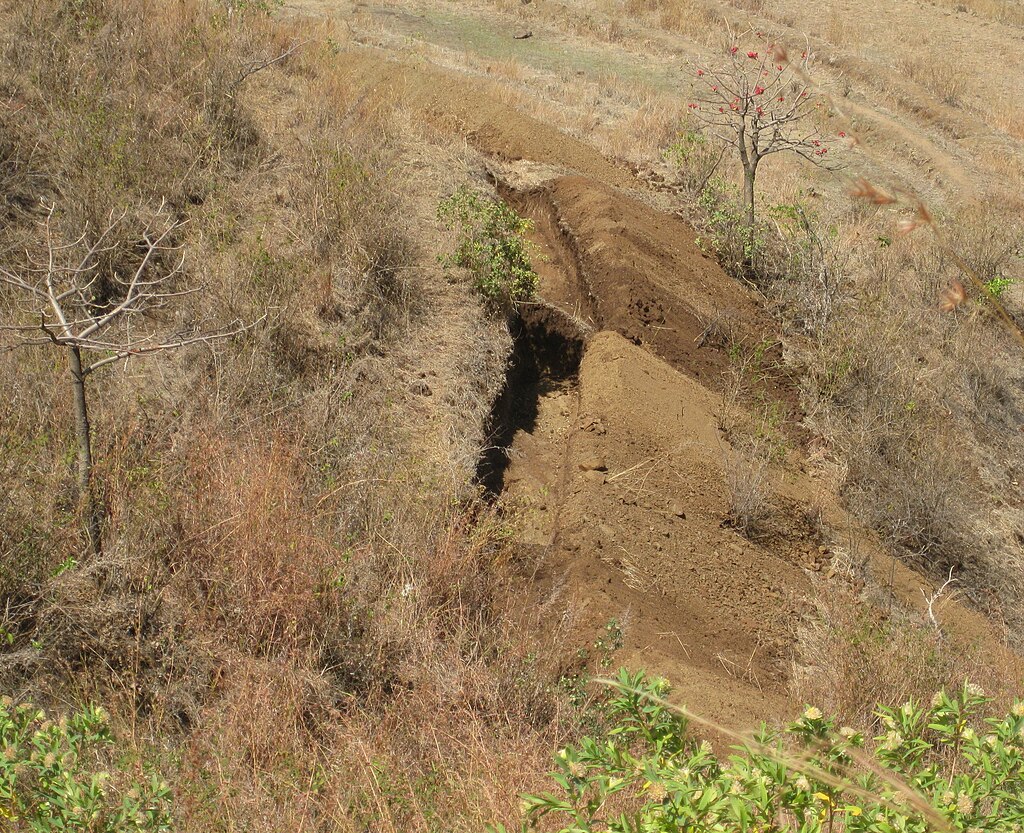A few months ago, while casually scrolling through articles on environmental issues, I came across a line that stopped me in my tracks: “We may have only 60 harvests left.” At first, it sounded like just another dramatic statistic. But the more I read, the more I realised it wasn’t just a headline—it was a warning backed by science. This alarming claim referred to the rapid rate at which soil is degrading, not just globally but especially in India, where agriculture sustains the livelihoods of over half the population.
In India, over 30% of the total land area is now classified as degraded, according to the Indian Space Research Organisation (ISRO). This means the soil has lost its natural fertility and structure—critical qualities that allow it to grow crops, store water, and regulate the climate. As I went deeper into the research, it became clear that this problem isn’t new, but it has quietly worsened under our feet while we focused on more visible environmental issues.
The causes are both human and climatic. India’s agricultural transformation during the Green Revolution brought higher crop yields but also introduced intensive practices that depleted the soil. Heavy reliance on chemical fertilizers, pesticides, and monoculture farming stripped the soil of essential organic matter and microbial life. Over time, the deep tilling of land, destruction of biodiversity, and excessive irrigation practices left large stretches of farmland dry and lifeless.
On top of this, deforestation, urban expansion, and industrial pollution have pushed the soil beyond recovery in many regions. Rural India has seen countless examples of topsoil—the nutrient-rich upper layer essential for farming—being washed away during floods or swept into the air during droughts. This erosion isn’t just a loss of dirt; it’s a loss of life-supporting systems. The National Bureau of Soil Survey reports that India loses about 5.3 billion tonnes of soil every year. That’s soil we can never fully replace.
What shocked me even more was learning how closely soil health is tied to climate change. Healthy soil stores large amounts of carbon. When it degrades, it releases that carbon into the atmosphere, worsening global warming. In other words, soil isn’t just a victim of climate change—it’s also a contributor if we neglect it. This closed loop of destruction affects everything from food production to water security to the economy. Food grown in poor soil lacks vital nutrients, increasing the risk of malnutrition. Poor soil also holds less water, intensifying the impact of droughts and floods.
But despite how daunting it all sounds, hope remains—if we act now. Across India, various communities, NGOs, and local leaders are already taking small but powerful steps to reverse the damage. In places like Rajasthan and Tamil Nadu, farmers are turning to regenerative agricultural methods: composting, crop rotation, cover cropping, and using organic materials instead of synthetic inputs. These techniques not only improve yields but help restore soil biodiversity and moisture retention.
India’s indigenous agricultural practices—rooted in sustainability long before modern systems disrupted them—are slowly being revived. From using cow dung and leaf litter for compost to growing a variety of crops on the same land, these methods are being recognized again for their effectiveness. But broader awareness and government support are essential to scale them up.
What Can We Do About It?
One of the most powerful tools we have is awareness. Most people, like I once did, don’t think much about soil. But understanding that everything we eat, wear, or use begins in the soil is transformative. Discussing soil degradation in schools, universities, and social platforms can spark a wider movement. Every educated voice adds weight to the call for sustainable land use.
As consumers, we can make conscious choices—buying from local farms that use natural methods, supporting brands that prioritize sustainability, and reducing food waste. Composting kitchen scraps, even in small urban spaces, can contribute organic matter back into the environment rather than filling landfills.
We must also pressure policymakers to act. Governments play a crucial role in framing pro-soil legislation, incentivizing regenerative agriculture, and investing in land restoration projects. Whether it’s signing petitions, attending public forums, or writing to local representatives, civic participation can lead to meaningful changes in agricultural and environmental policies.
Most importantly, we must shift how we perceive soil—from something passive and lifeless to something essential and alive. Soil is the quiet foundation of civilization. It feeds us, filters our water, stores our carbon, and supports the planet’s ecosystems. Without healthy soil, there is no sustainable future.
The journey that began for me with a single article has completely changed the way I see the ground beneath my feet. The crisis is real, and it is here. But the solutions are also within reach—grounded in science, tradition, and collective will. Saving soil isn’t just about saving nature. It’s about protecting the very base on which our society, economy, and lives are built.
The time to act is now—because once soil is gone, there’s no going back.
References
1. Indian Space Research Organisation. (2021). Desertification and Land Degradation Atlas of India. Ministry of Environment, Forest and Climate Change. Retrieved from https://www.moef.gov.in/uploads/2023/07/NAP%20final-2023.pdf
2. National Bureau of Soil Survey and Land Use Planning. (2020). Annual Soil Loss in India. Indian Council of Agricultural Research. Retrieved from https://nbsslup.icar.gov.in/wp-content/uploads/2021/10/Annual_Report/NBSSLUP_AR2020.pdf
3. Food and Agriculture Organization of the United Nations. (2015). Status of the World’s Soil Resources (SWSR) – Main Report. Rome, Italy: FAO. Retrieved from https://openknowledge.fao.org/server/api/core/bitstreams/6ec24d75-19bd-4f1f-b1c5-5becf50d0871/content
4. Ministry of Agriculture and Farmers Welfare. (2022). Report on Soil Health and Management. Government of India. Retrieved from https://agriwelfare.gov.in/en/IntegratedDiv
5. IUCN. (2022). Movement gaining momentum to save soil. International Union for Conservation of Nature. Retrieved from https://iucn.org/news/water/202204/movement-gaining-momentum-save-soil
6. Soil Association. (n.d.). Save our Soil. Retrieved April 12, 2025, from https://www.soilassociation.org/causes-campaigns/save-our-soil
7. Conscious Planet. (n.d.). Save Soil Campaign. Retrieved April 12, 2025, from https://consciousplanet.org/en/save-soil







Leave a Reply